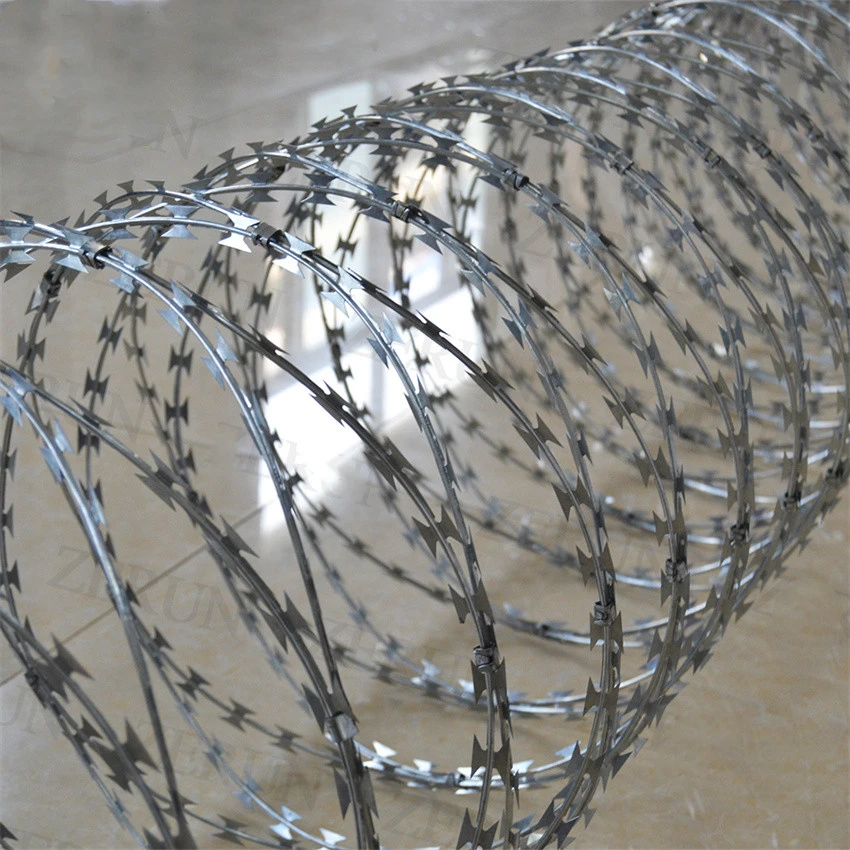Dec . 11, 2024 10:38 Back to list
Entangled Barbed Wire in a Twisted Design for Enhanced Security and Aesthetic Appeal
The Evolution and Symbolism of Twisted Barbed Wire
Twisted barbed wire, a simple yet formidable invention, has played a pivotal role in shaping both agricultural practices and the landscape of modern society. Its design, which typically incorporates sharp barbs protruding from a twisted strand of wire, serves not only as a means of physical enclosure but also as a potent symbol of boundaries, protection, and even conflict.
Historical Context
The origins of barbed wire can be traced back to the late 19th century, a time when the American West was undergoing rapid transformation due to westward expansion and the increasing need for efficient fencing. In 1867, a patented design by Lucien B. Smith marked the first recorded instance of barbed wire, but it was Joseph Glidden’s refinement in 1874 that truly revolutionized its use. Glidden’s design featured two strands of wire twisted around each other with barbs, providing both strength and deterrence to livestock. This innovation not only facilitated the management of cattle herds but also played a crucial role in demarcating property lines, leading to the concept of land ownership being clearly defined in a rapidly changing landscape.
Twisted Designs and Varied Uses
The twisted nature of barbed wire allows it to maintain tension, making it particularly effective in various applications. In agricultural settings, it has been predominantly used to contain livestock and protect crops from intruders. However, its utility extends beyond farming. Today, twisted barbed wire is widely employed in security fencing for prisons, military installations, and high-risk public buildings. It serves as an intimidating deterrent against trespassers, highlighting the complex relationship between safety and aggression.
Furthermore, its twisted structure provides additional benefits such as durability and ease of installation, making it a preferred choice for many property owners. Whether used alongside wooden or metal posts, the installation of twisted barbed wire fencing is relatively straightforward, allowing for quick deployment in various environments.
twisted barbed wire

Symbolism and Psychological Impact
Beyond its physical applications, twisted barbed wire evokes a range of symbolic interpretations. Its sharp barbs and twisted strands can represent confinement and restriction, a boundary that one cannot easily cross. This duality of function and form brings to light the psychological impact of such barriers in our society. Fencing off an area signifies ownership and control but also implies societal divisions, whether they be physical, social, or political.
In modern discourse, the imagery of twisted barbed wire often resurfaces in discussions on controversial topics like immigration, national security, and civil rights. It is not uncommon for protests and movements to lean on this symbol of division—whether critiquing oppressive regimes or highlighting the plight of refugees facing barriers in search of safety. As a result, twisted barbed wire transcends its utilitarian origins, emerging as a potent metaphor for the struggles faced by those who find themselves on the wrong side of a barrier.
Technological Innovations and the Future
As we advance into an era defined by technological innovations, the design and application of twisted barbed wire continue to evolve. Modern variations include razor wire and electric fencing, which enhance security measures while retaining the basic principles of the original design. These advancements reflect a growing need for security in a world that is increasingly urbanized and complex.
In conclusion, twisted barbed wire embodies a rich tapestry of history, functionality, and symbolism. From its inception as a practical solution for farmers to its dual role as a sign of division and protection, it persists in shaping our physical and cultural landscapes. As society grapples with the implications of boundaries—whether they be physical, social, or ideological—the legacy of twisted barbed wire will undoubtedly remain a significant point of reference in our ongoing discussions about security, freedom, and human rights.
-
Reinforcing Mesh: Core Material of the Construction Industry
NewsJul.07,2025
-
Welded Wire Fabric Reinvented for Modern Projects
NewsJul.04,2025
-
Superiority of Stainless Steel Woven Mesh
NewsJul.04,2025
-
Key Types of Razor Wire and Their Applications
NewsJul.04,2025
-
Durable Metal Fence Types for Security
NewsJul.04,2025
-
Best Materials for Livestock Fence
NewsJul.04,2025
products.







